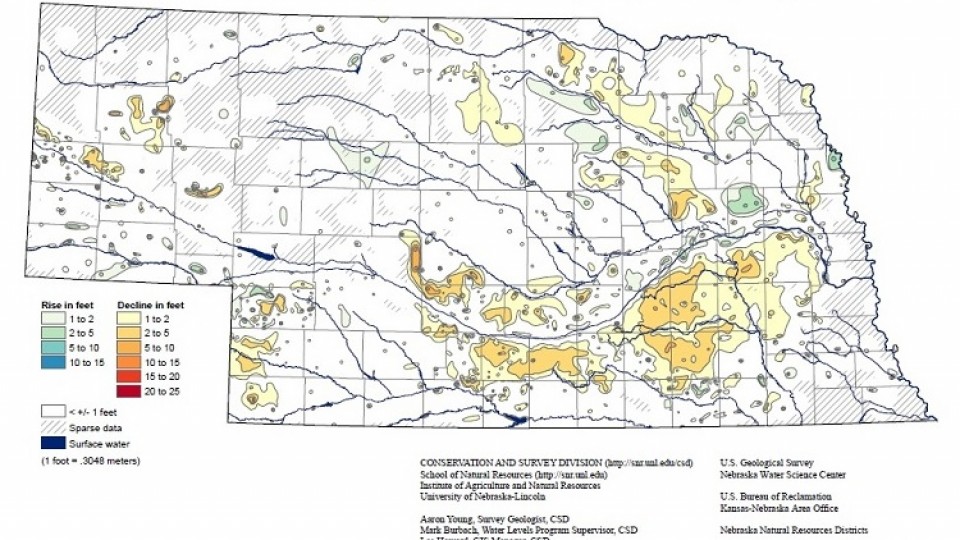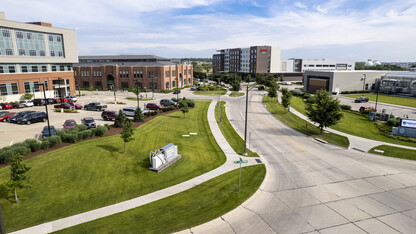· 3 min read
Report reveals continued declines, some rises in statewide groundwater levels

The 2014 Nebraska Statewide Groundwater-Level Monitoring Report reveals that the state is still reeling from the effects of the 2012-2013 drought.
“From the spring of 2013 to the spring of 2014, water levels continued to decline following the extended period of drought from early 2012 through the summer of 2013,” said Aaron Young, survey geologist at the Conservation and Survey Division in UNL’s School of Natural Resources.
However, easing drought conditions for the eastern half of the state and better water use practices accounted for lower declines. On average, water levels declined half a foot from spring 2013 to spring 2014, compared to average declines of 2.55 feet from spring 2012 to spring 2013.
Southeastern Nebraska saw some of the largest declines in groundwater levels, with some wells recording declines of up to five feet.
“Declines in these areas resulted from below normal precipitation values, possibly combined with delayed response of the aquifer to drought conditions in 2012,” Young said.
Notable areas of groundwater level rises of one to 10 feet occurred in the southern Panhandle, Perkins, Holt and Colfax counties, in addition to localized areas throughout the state.
In the spring of 2012, northern Colfax County experienced groundwater level declines of more than 20 feet. In the spring of 2014, water levels rebounded two to 10 feet in the same area.
The spring of 2013 saw the setting of many records, including unprecedented one-year declines of almost 25 feet in some wells. In spite of water levels continuing to fall throughout the state in the spring of 2014, conditions were much less severe, Young said.
“Although water levels have declined for much of the state over the last few years, conditions are far from dire,” he said. “Declines experienced in some parts of the state will recover if we experience a number of wet years.”
In 2013, precipitation values for Nebraska were on average 1.32 inches below normal – compared to 10.34 inches below normal in 2012, according to the High Plains Regional Climate Center. The increased precipitation in 2013 drastically reduced the demand for irrigation water, which eased the strain on groundwater pumping.
Groundwater-level monitoring began in Nebraska in 1930. The annual reports and maps have been produced by the Conservation and Survey Division in the School of Natural Resources at UNL since the 1950s.
Statewide groundwater-level monitoring reports depict the change in water levels from spring to spring at different time scales. The reports study the rates of drawdown and recharges measured in regional wells, and give a general depiction of the current state of groundwater levels on a yearly basis. The reports also compare historical trends of regional water levels over extended periods of time. Collecting data is a collective effort between the United States Geological Survey, U.S. Bureau of Reclamation, Nebraska Natural Resources Districts and Central Nebraska Public Power and Irrigation District.
The 2014 Nebraska Statewide Groundwater-Level Monitoring Report is $12 and available for purchase from the Nebraska Maps and More Store on the first floor of Hardin Hall. The book can also be purchased online. To place an order by phone, call 402-472-3471.







